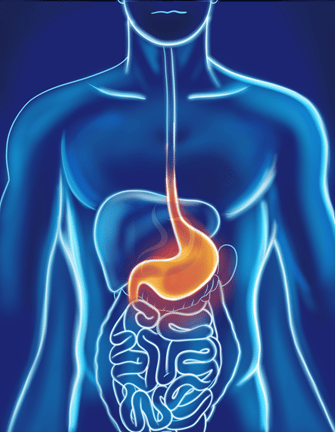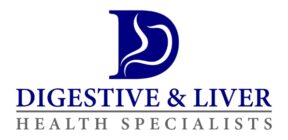An upper endoscopy is a common diagnostic and therapeutic procedure performed by the exceptional team at Digestive & Liver Health Specialists. When they need to determine the cause of gastrointestinal symptoms, an upper endoscopy gives them the answers they need to treat the underlying problem and get you back on the road to health and wellness.
Upper endoscopy, also known as esophagogastroduodenoscopy or EGD, is used to visually examine and diagnose conditions of the upper gastrointestinal, or digestive tract. This procedure allows your provider at Digestive & Liver Health Specialists to evaluate the upper gastrointestinal tract, including the esophagus, stomach and duodenum, or upper part of the small intestine.

An upper endoscopy is performed using a flexible tube with an attached light and camera, called an endoscope. It is inserted through the mouth and guided along to thoroughly examine the upper gastrointestinal tract.
Candidates for Upper Endoscopy
Patients experiencing any signs of digestive problems, such as difficulty swallowing food, unexplained weight loss, nausea or vomiting, are usually considered good candidates for upper endoscopy. However, before undergoing the procedure, the doctor should be made aware of the presence of any preexisting or current medical conditions that may affect the patient's eligibility for an upper endoscopy such as pregnancy, allergies to medication or any existing medical conditions.
Reasons for Upper Endoscopy
Upper endoscopy can be extremely beneficial for identifying and treating various conditions that affect the upper digestive tract, including anemia and cancers of the digestive system. Unlike surgical techniques, it requires no incisions or stitches.
Upper endoscopy is usually recommended for investigating troublesome digestive symptoms, such as abdominal pain, bleeding, nausea, difficulties swallowing, vomiting, heartburn and ulcers. Upper endoscopy is also used to treat certain problems of the digestive system, which may involve cauterizing blood vessels to stop bleeding or widening a narrow esophagus. In addition to the diagnostic and investigative purposes of an upper endoscopy, the following may be performed:
- Tissue samples can be obtained for biopsy
- Matter lodged in the gastrointestinal tract can be removed
- Therapeutic procedures may be performed
Upper endoscopy may also be combined with other imaging procedures, such as an ultrasound
Using an upper endoscopy, the team at Digestive & Liver Health Specialists can diagnose problems such as:
- Acid reflux or gastroesophageal reflux disease
- Peptic ulcers
- Inflammation and infections
- Gastritis
- Crohn’s disease
- Hiatal hernia
An upper endoscopy also helps to accurately identify cancerous and noncancerous tumors.
The Upper Endoscopy Procedure
The only way your doctor at Digestive & Liver Health Specialists can get a good image during an upper endoscopy is when the structures of your upper GI tract are free and clear of food. That means you shouldn’t eat or drink for about eight hours before your planned procedure.
You may also need to adjust the medications you’re taking, but your provider talks with you ahead of time to work out the details. When it’s time for your upper endoscopy, you receive a sedative and a local anesthetic for your throat, then the endoscope is inserted through your mouth.
The procedure generally takes 30 minutes or less, but you stay in recovery until the sedative wears off. You may have a mild sore throat afterward. However, upper endoscopies seldom cause other side effects.
The endoscope will then be passed through the mouth and guided along the upper gastrointestinal tract, transmitting images on to a video monitor in the treatment room.
Recovery from Upper Endoscopy
After the upper endoscopy is completed, the patient will be monitored in a recovery area for approximately 1 hour. A sore throat is rare after this procedure, but if one does occur, it can be soothed with lozenges. Driving is not permitted for up to 24 hours after the procedure, so the patient should arrange for transportation home. With the doctor's approval, the patient can usually resume their regular activities the next day.
Risks of Upper Endoscopy
Upper endoscopy is generally considered a very safe procedure. However, while considered rare, there are risks which may include:
- Reaction to sedatives or anesthesia
- Bleeding
- Puncture of the gastrointestinal tract
- Infection
- Difficulty breathing
After the procedure, some patients may suffer from persistent pain in the area of the endoscopy.
Results of Upper Endoscopy
The results of an upper endoscopy are commonly available immediately after the procedure. If a biopsy was performed, the tissue sample is sent to a pathology lab for detailed testing, and results may be available within 1 to 2 weeks. An appropriate treatment plan is created after a review of all test results.

